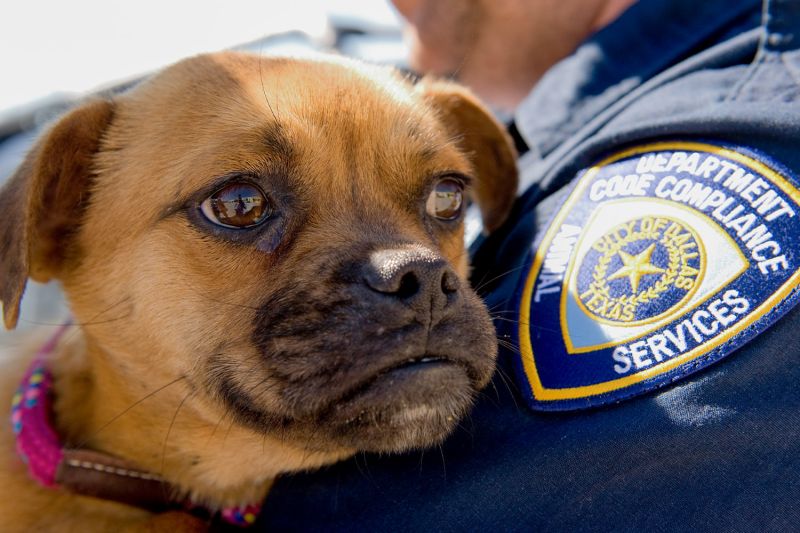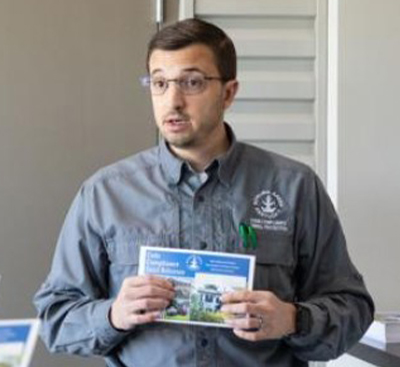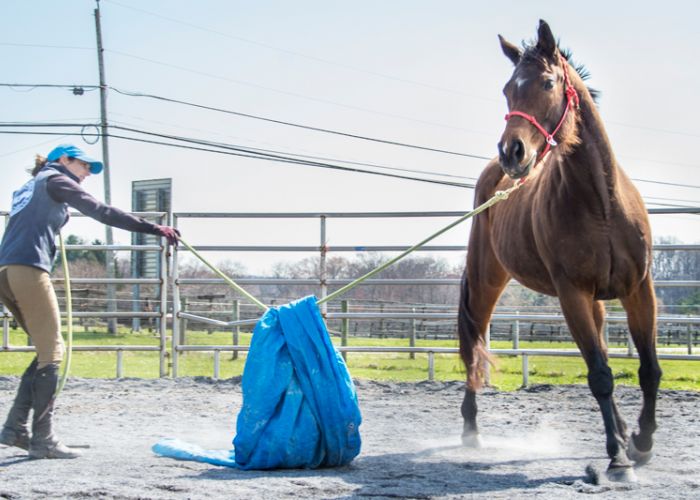Leading the way in field services
Humane World and the National Animal Care and Control Association launch innovative leadership course series

What makes a successful leader? The question has been pondered by ancient Greek philosophers, modern-day corporate tycoons and countless others throughout the ages.
Last year, staff from Humane World for Animals’ Law Enforcement Training Center and the National Animal Care and Control Association began studying the question through a narrower lens: What do people need to know to thrive as leaders in animal services?
It wasn’t a mere thought exercise. Both organizations aimed to fill a gap in available training for animal care and control professionals.
In the past, training courses for field services have largely focused on “boots-on-the-ground” skills, says NACA executive director Jerrica Owen. But it’s just as important that agency leaders have the skills and knowledge they need to guide their teams and support staff retention.
Owen and members of the Humane World law enforcement training team started by talking with leaders of agencies of various sizes, budgets and organizational structures, identifying a set of common challenges.
“Our vision was to create content that was appropriate for leadership in the field services space, to empower them and their officers to be in the place where we want field services to be, not field services from 50 years ago,” Owen says.
The result was the field services leadership academy, a virtual eight-hour course series taught by experts in leadership skills, data analysis, public relations and strategies for supporting emotional resilience.
Loren Reese, a specialist with the HSUS Law Enforcement Training Center, expected that about 20 people would sign up for the course. But in late 2023, 48 hours after NACA put the application on its website, 100 people had applied—a clear sign that field services staff are hungry for guidance on how to be better leaders, Reese says.
Evolving into a stronger leader
The inaugural leadership academy launched in January 2024 with 28 students from animal services agencies across North America. “We wanted to keep the class size small so people felt comfortable sharing what they’re seeing in their community and talking amongst their peers,” Reese says.

Among the participants was Brad Schargorodski, division manager of Code Compliance and Animal Protection for the city of Bowling Green, Kentucky. Schargorodski spent most of his career with the city working as a code enforcement officer before he was promoted to division manager and found himself overseeing his city’s animal services officers. That was nearly four years ago, he says, but compared to many of his peers, he doesn’t have much experience in animal services.
The course gave him a chance to learn about different approaches from other field services agency leaders. It also generated “pages and pages of notes of things I need to work on.”
Things like identifying underlying reasons for some of the problems animal services officers commonly encounter. “I like data,” Schargorodski says, “but I’d never gotten the training to identify root causes.” He’s since started analyzing response data and incident reports from recent years to help his team address pet owner needs in his community.
The public relations class, with tips for speaking to the media, also served him well. “It gave me more confidence,” he says. “My most recent interview was about a rabies clinic. I watched it on TV, and it’s the best I’ve ever done.”
The most challenging part of the course for Schargorodski was the class on compassion fatigue. “I’m not touchy-feely,” he admits. At the same time, he adds, part of being a good manager is knowing your weaknesses and leaning on staff members who are strong in those areas. Earlier this year, he encouraged one of his team members, a seasoned animal services officer who is comfortable discussing emotional issues, to complete a certification class in mental health.
For small agencies with limited budgets, the free trainings offered by NACA and Humane World are invaluable, Schargorodski adds. The leadership academy exceeded his expectations and gave him tangible ways he could better serve his staff and his community.
“It’s easy to get caught up in the day-to-day, especially in animal services, when you’re going from this dog to the next dog to the next chicken,” he says. “Now we’re looking at the big picture, and we’re literally better as a team.”
“It’s easy to get caught up in the day-to-day, especially in animal services. ... Now we’re looking at the big picture, and we’re literally better as a team.”
—Brad Schargorodski, City of Bowling Green, Kentucky
These are the types of results Owen hoped for when she began working with the HSUS to develop the course curriculum. The feedback from participants has been overwhelmingly positive, she says, affirming that the topics were relevant to field services leaders’ needs.
“I think we hit nail on the head,” she says. “Now we can start to build it out and expand the course series.”
The next leadership academy is slated to launch this fall, and Schargorodski is eager to sign up some of his team members.
“I have officers who are leaders, too. Even though they’re not managers, they’re leaders in the field,” he says. “As a leader, you have to keep growing.”






